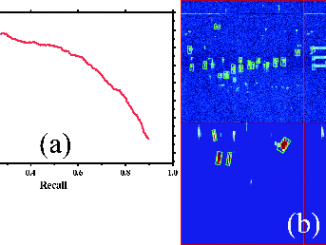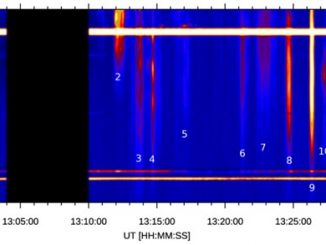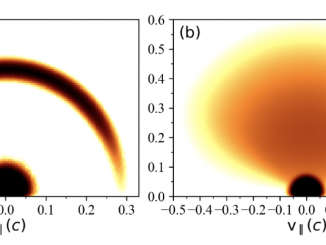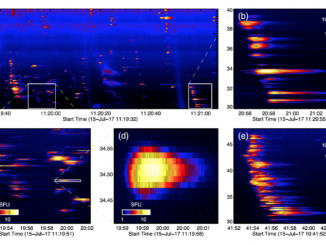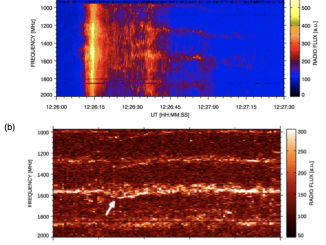Magnetic Field Geometry and Anisotropic Scattering Effects to Explain Puzzling LOFAR Solar Radio Burst Observations by D. L. Clarkson et al.
Solar radio bursts are an indirect signature of accelerated electron beams from the solar atmosphere. These fast electrons generate Langmuir waves as they propagate through a decreasing plasma density and ultimately lead to the bright broadband radio emissions with a characteristic fast frequency drift in dynamic spectra. Density turbulence in the plasma can modulate this process, producing fine structures such as sub-second, narrowband striae and spikes. These fine structures may […]



